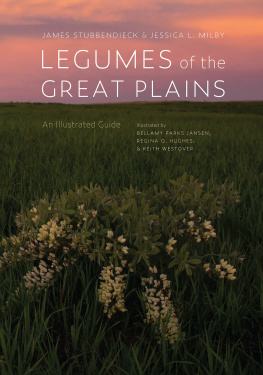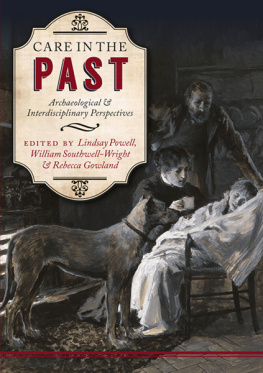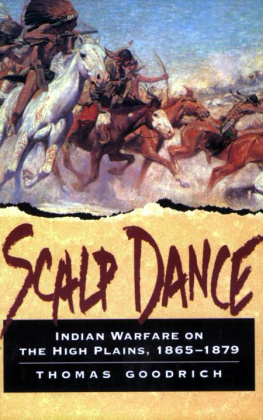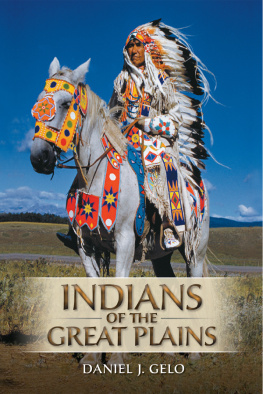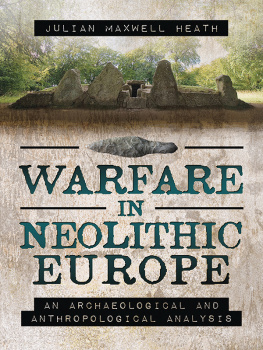Andrew Clark - Archaeological Perspectives on Warfare on the Great Plains
Here you can read online Andrew Clark - Archaeological Perspectives on Warfare on the Great Plains full text of the book (entire story) in english for free. Download pdf and epub, get meaning, cover and reviews about this ebook. year: 2018, publisher: University Press of Colorado, genre: Politics. Description of the work, (preface) as well as reviews are available. Best literature library LitArk.com created for fans of good reading and offers a wide selection of genres:
Romance novel
Science fiction
Adventure
Detective
Science
History
Home and family
Prose
Art
Politics
Computer
Non-fiction
Religion
Business
Children
Humor
Choose a favorite category and find really read worthwhile books. Enjoy immersion in the world of imagination, feel the emotions of the characters or learn something new for yourself, make an fascinating discovery.

- Book:Archaeological Perspectives on Warfare on the Great Plains
- Author:
- Publisher:University Press of Colorado
- Genre:
- Year:2018
- Rating:5 / 5
- Favourites:Add to favourites
- Your mark:
- 100
- 1
- 2
- 3
- 4
- 5
Archaeological Perspectives on Warfare on the Great Plains: summary, description and annotation
We offer to read an annotation, description, summary or preface (depends on what the author of the book "Archaeological Perspectives on Warfare on the Great Plains" wrote himself). If you haven't found the necessary information about the book — write in the comments, we will try to find it.
Andrew Clark: author's other books
Who wrote Archaeological Perspectives on Warfare on the Great Plains? Find out the surname, the name of the author of the book and a list of all author's works by series.
Archaeological Perspectives on Warfare on the Great Plains — read online for free the complete book (whole text) full work
Below is the text of the book, divided by pages. System saving the place of the last page read, allows you to conveniently read the book "Archaeological Perspectives on Warfare on the Great Plains" online for free, without having to search again every time where you left off. Put a bookmark, and you can go to the page where you finished reading at any time.
Font size:
Interval:
Bookmark:

245 Century Circle, Suite 202
Louisville, Colorado 80027
Printed in the United States of America
 The University Press of Colorado is a proud member of the Association of University Presses.
The University Press of Colorado is a proud member of the Association of University Presses.ISBN: 978-1-60732-670-0 (e-book)
https://doi.org/10.5876/9781607326700
Title: Archaeological perspectives of warfare on the Great Plains / edited by Andrew J. Clark and Douglas B. Bamforth.
Description: Boulder : University Press of Colorado, [2018] | Includes bibliographical references and index.
Identifiers: LCCN 2017032682| ISBN 9781607326694 (cloth) | ISBN 9781607326700 (ebook)
Subjects: LCSH: Indians of North AmericaWarfareGreat Plains. | Indians of North AmericaGreat PlainsAntiquities. | Excavations (Archaeology)Great Plains.
Classification: LCC E98.W2 A73 2018 | DDC 978.004/97dc23
LC record available at https://lccn.loc.gov/2017032682
 An electronic version of this book is freely available, thanks to the support of libraries working with Knowledge Unlatched. KU is a collaborative initiative designed to make high-quality books open access for the public good. The open-access ISBN for the PDF edition of this book is 978-1-60732-859-9 and the open-access ISBN for the ePUB edition of this book is 978-1-60732-870-4. More information about the initiative and links to the open-access version can be found at www.knowledgeunlatched.org.
An electronic version of this book is freely available, thanks to the support of libraries working with Knowledge Unlatched. KU is a collaborative initiative designed to make high-quality books open access for the public good. The open-access ISBN for the PDF edition of this book is 978-1-60732-859-9 and the open-access ISBN for the ePUB edition of this book is 978-1-60732-870-4. More information about the initiative and links to the open-access version can be found at www.knowledgeunlatched.org.What Do We Know about Warfare on the Great Plains?
Font size:
Interval:
Bookmark:
Similar books «Archaeological Perspectives on Warfare on the Great Plains»
Look at similar books to Archaeological Perspectives on Warfare on the Great Plains. We have selected literature similar in name and meaning in the hope of providing readers with more options to find new, interesting, not yet read works.
Discussion, reviews of the book Archaeological Perspectives on Warfare on the Great Plains and just readers' own opinions. Leave your comments, write what you think about the work, its meaning or the main characters. Specify what exactly you liked and what you didn't like, and why you think so.




